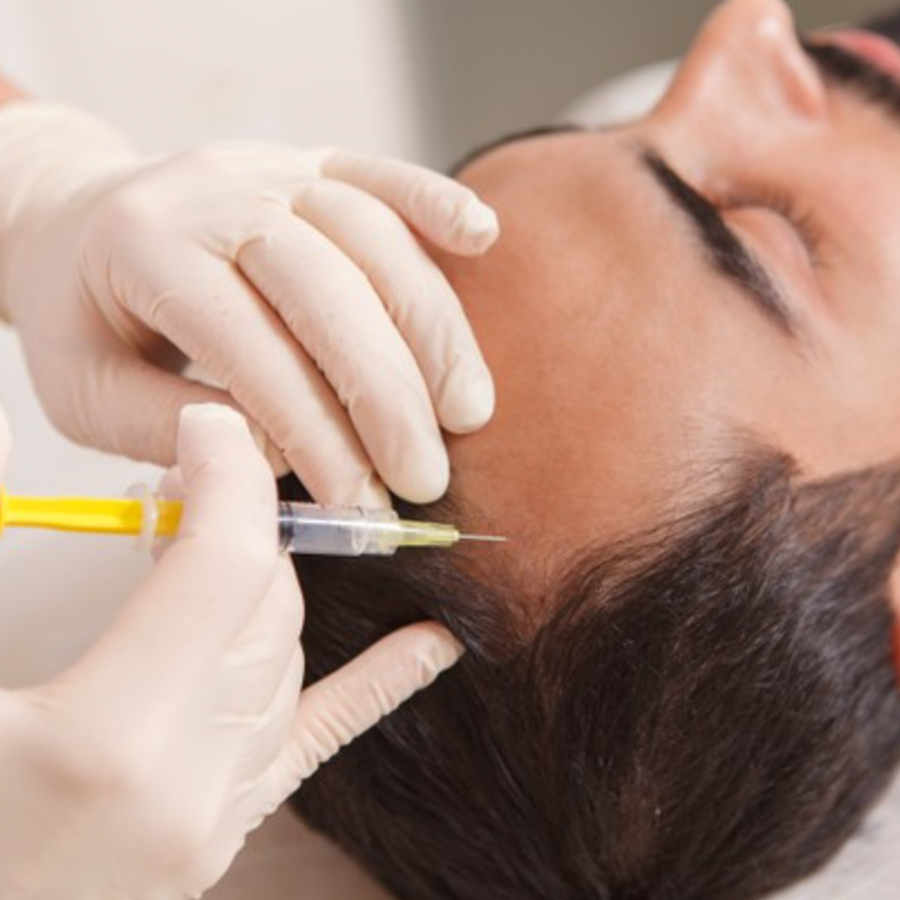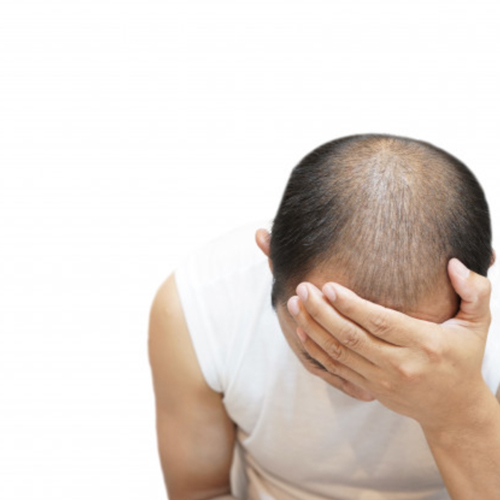This an update on the quest for hair cloning technology in 2021.
The article is a transcript of my video on the subject.
So it’s fair to say, when hair cloning is finally here, hair loss will be history.
The question is, when is it going to be here? To answer this question?,
I looked at the biggest companies doing hair cloning research today to find out exactly where they at, and from all that research,
I’ve been able to estimate roughly how many years before hair cloning is available on the market.
How does hair cloning work?
So let’s explain how hair cloning works. It’s really, really very simple.
It’s actually very similar to the hair transplant procedure itself with the one major difference.
So just like with hair transplants, you start by taking a strip of hair, usually from the back of the head.
And from these hairs, you take special types of cells that are able to replicate themselves, and you replicate them in a dish just like this.
This happens all in the lab.
And then you take your brand new hair that has been cloned and grown, and you transplant it back into the client or a patient’s scalp.
It’s really as simple as that.
Advantages of hair cloning
So let’s kick things off by talking about why hair cloning is so exciting.
What are the advantages of hair cloning? The first advantage is that it’s a source of limitless supply.
So at the moment, if your donor area is kind of weak, you can maybe afford to have one, maybe two hair transplants before you run out.
With hair cloning, you just have a limitless supply. You just clone some more hair every time you need a hair transplant.
So you can have as many hair transplanted as you want. The second advantage is that the hair is biologically identical to your own hair.
So there’s no worries about rejection or anything like that. And it’s suitable for even the severely bald.
So even if you have very, very weak, minimal donor area, then hair cloning is going to make a full head of hair possible for you.

Now let’s have a quick look at some of the big companies that have been doing hair cloning research, and exactly where they’re at today.
So let me take you back about 10, 15 years. So back in the 2000s and the early 2010s, universities were leading the research.
So there was lots of universities participating in the research to get this hair cloning science all set up, but all the universities have slowly scaled back the operation.
Now, all the research, almost all of it is led by private companies. Now it’s a really interesting question why the universities are pulled out.
Was it getting too expensive? Did they realize that …
It can’t be because they think there’s no market for it, because let’s be honest, whoever cracks hair cloning is going to be an overnight billionaire.
So it can’t be because of a lack of market. Possibly they might’ve thought the technical difficulties are just too much, and this is beyond them financially.
I think that’s the most likely reason. But anyway, now all the research is done by private companies.
Japan, which is the leading country at the moment in terms of hair cloning research have a partnership of a company called Shiseido and RepliCel,
which was really, really promising, because we’re using a specific technique called the dermal sheath cup.
They were getting cells with this dermal sheath cup and cloning them in massive numbers.
And they published their phase two trial in March this year, but the results were very disappointing, very underwhelming.
And some people said that the results were barely better than what you get with Regaine, the spray solution for hair loss that’s been around for 20 years.
So very disappointing results so far.
Now let’s have a quick look at some of the big companies that have been doing hair cloning research, and exactly where they’re at today.
So let me take you back about 10, 15 years. So back in the 2000s and the early 2010s, universities were leading the research.
There were lots of universities participating in the research to get this hair cloning science all set up, but all the universities have slowly scaled back the operation.
Now, all the research, almost all of it is led by private companies. Now it’s a really interesting question why the universities are pulled out.
Was it getting too expensive? Did they realize that …
It can’t be because they think there’s no market for it, because let’s be honest, whoever cracks hair cloning is going to be an overnight billionaire.
So it can’t be because of a lack of market. Possibly they might’ve thought the technical difficulties are just too much, and this is beyond them financially.
I think that’s the most likely reason. But anyway, now all the research is done by private companies.

Dr Tsuji and Riken
The next company is a company called Riken, which partnered with an electronics giant in Japan, led by a chap called Dr. Tsuji.
And in 2018, they announced that they aim to have a product in the market by 2020, but so far no news.
But they’ve just made an announcement, I think in August this year, so last month. The way I found out this news is bit of a long-winded way.
And that guy, that’s Dr. Tsuji apparently, and this is a Japanese YouTuber who does the hair transplant videos like this channel.
And apparently he met with Dr. Tsuji last month in August, 2020.
And Dr. Tsuji told him apparently that they found a product that has outperformed minoxidil, or Regaine,
and they hope to have this product in the market to start testing this product very, very soon.
So it seems they’ve made a breakthrough, but it’s not been widely announced-
Stemson
Next company is in the good old USA. That should say Stemson, with an M.
Apologies for that spelling error. So Stemson is a very new company, only two years old, and let’s have a quick look at their website.
I couldn’t really see any kind of breakthrough news or anything like that.
They just educate you about the way they’re working and their aim to have this technology cracked.
But nothing, no breakthroughs as yet. And they were planning to launch trials in early 2021.
That’s probably not going to happen because of the current climate.
There’s probably been delays with their plans anyway, so I totally think this is going to happen.
The HASCI method
Now, there’s a really exciting method already available in the market that blends the principles of hair transplantation and hair cloning.
Let’s have a look. I couldn’t really do this video without mentioning this. The HASCI method.
So there’s already a hair cloning type of procedure available, and it hasn’t been available for many years,
and it’s available in the Netherlands, the UK, and Indonesia.
I think possibly also France, but I’ll have to double check that.
So this is the HASCI method, and the idea behind it is very similar to hair transplants.
You kind of get the hair and transplants it from the donor area into the bald area.
But the difference is you actually take apart of the hair and you leave the growing part in the scalp,
so that in a few months time, the hair regrows and then you can go back and harvest it again.
So basically you leave the hair growing. That means you don’t deplete your donor area.
Very, very clever methods. To be honest, I haven’t come across any clients who’ve had this work. So this is something …
I might actually do a review of it. It’s very exciting.
So the obvious advantage is that you can do repeat harvesting of the same donor area, especially good for people who have weak donor areas.

Why is hair cloning proving difficult to master?
So why has it proven so difficult to clone hair? Because hair, if you think about it, is just a strand of keratin.
So why is it so difficult? From what I understand, the first challenge is that it’s proven quite difficult to get a good number of germinative cells.
So these are the cells that can actually replicate. So it’s proven quite difficult to get a good number of this.
Poor survival after implantation, so this is after you’ve implanted the cloned hair, the survival has not been good.
And finally, it has been difficult to control the growth direction. So they found that the hair, the way the hair grows,
instead of growing upward, some hair were growing sideways, and some hair were actually growing into the scalp, causing ingrown hair and possibly infections.
So this has proven a challenge as well.
How many years away is hair cloning?
So how many years is it going to take? So back in 2010 people were saying that this is going to take Five to seven years,
And then five to seven years came.
They said, “Oh, it’s going to be another five years, and then another five years, and it’s just being carrying on ever since.
Realistically, looking at the data that I’ve seen so far, I think we are a minimum of 10 years away from having hair cloning on the market.
It’s disappointing but I think the challenge has proven a lot more difficult than anyone realized.

Pharmacist with special interest in hair loss and hair transplantation.
Read my book on hair transplants in Turkey on Amazon:
https://track.more-info.co.uk/amazon/authorprofile













